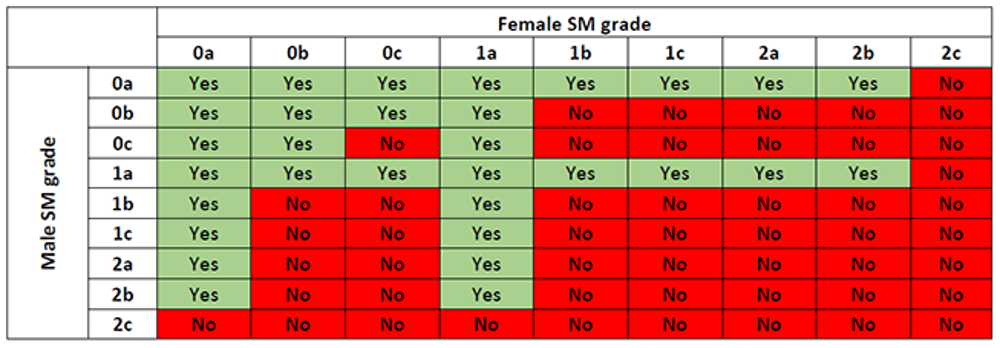
What is CM/SM?
Chiari-like malformation (CM) is a fault in the development of the skull, causing part of the brain to protrude from the opening at the back of the skull. Syringomyelia (SM) refers to the presence of one or more fluid-filled pockets that may develop in the spinal cord, called syrinxes.
How is CM/SM inherited?
Both CM and SM are controlled by a number of different genes and influenced by several environmental factors (e.g. diet, exercise or factors when in the womb before birth etc.). Each of the genes that help influence whether a dog develops CM/SM may have different possible versions, or variants. Some versions increase the risk of CM/SM, while others decrease the risk.
Each dog will have a mix of these “good” and “bad” versions of genes, making it very difficult to predict whether a dog will be affected. The impact one version of a gene has might only be slight, but lots of genes having a small influence have a combined additive effect.
The way in which these conditions are inherited is not straightforward; hence the name complex inherited disorders. These complex diseases are usually seen across many different breeds and are also described in both cross breeds and mixed breeds.
What are the signs of CM/SM?
Although some dogs with mild CM/SM can seem completely normal, other dogs experience intense pain and may be unable, or unwilling, to exercise and have increased sensitivity to touch, especially around the head, neck, shoulders and sternum (breast bone). Severe cases may show a characteristic shoulder, neck and/or head scratching where they ‘air-scratch’ without making contact with the body. Some dogs show neurological signs such as incoordination and weakness.
Is this scheme relevant to my breed?
Find out which health tests or schemes are recommended for your breed on our Breeds A to Z. These recommendations are suggested by breed clubs and approved by The Kennel Club's committees.
Which breeds are affected by CM/SM?
There are a number of breeds where the conditions are known to occur.
These breeds include:
- Affenpinschers
- Cavalier King Charles Spaniels
- Chihuahuas
- Griffon Bruxellois
- Havanese
- King Charles Spaniels
- Maltese
- Papillons
- Pomeranians
- Toy breed crosses
- Yorkshire Terriers
- Boston terriers (rarely)
- Staffordshire Bull Terriers (rarely)
How do I get my dog screened for CM/SM?
To assess your dog's risk of CM/SM, or the degree to which they are affected, your vet may recommend you take your dog to a neurologist for an MRI (magnetic resonance imaging) examination of the brain and upper neck.
Why screen your dog?
Breeders are able to test their breeding stock for CM/SM before the dogs are used for breeding. Testing all potential breeding stock, where relevant, allows breeders to better understand the kind of genes a dog may pass on to its offspring, giving them the information required to attempt to avoid producing affected puppies. Making informed decisions from health test results enables breeders to adapt their breeding programmes and reduce the risk of the diseases appearing in future generations.
Using the BVA/KC CM/SM Scheme
The British Veterinary Association (BVA) and The Kennel Club (KC) CM/SM Scheme assesses MRI scans for signs of, and the degree to which, a dog may be affected by CM/SM. The scheme mostly examines pedigree toy breeds, but it is open to all dogs, including crossbreeds.
There are a number of veterinary centres which offer MRI scanning facilities using the protocol recommended by the scheme. The veterinary centre then sends the MRI images to the BVA where they are examined and "graded" by a panel of neurologists and radiologists. Once the MRI images have been graded, the result is returned to the vet, who relates it to the owner, and a copy is sent to The Kennel Club for recording and publication.
How can I find a specialist centre that follows the BVA/KC protocol?
Your vet will be able to give you guidance on veterinary centres which offer MRI scanning facilities and which follow the protocol recommended by the scheme.
What is the expected turnaround?
Four weeks.
How often should my dog be screened?
Since CM/SM is a condition that develops and worsens over time, scans throughout the dog's lifetime are recommended, generally at year one, three to five years and over five years.
Who reviews the MRI scans?
There is a panel of BVA-appointed neurologists and radiologists who will review the MRI scans. The MRI scans are assessed by two scrutineers who will agree the grading.
Where can I get more information on the scheme?
For further information on the schemes, please visit the BVA website.
What are the grades a dog may receive?
Chiari-like malformation (CM) grade
- Grade 0: No Chiari malformation
- Grade 1: Cerebellum indented (not rounded)
- Grade 2: Cerebellum impacted into, or herniated through the opening at the rear of the skull (the foramen magnum)
Syringomyelia (SM) grade
Dogs graded under the BVA/KC CM/SM Scheme can have the following grades
- Grade 0: Normal (no central canal dilation, no presyrinx, no syrinx)
- Grade 1: Central canal dilation (CCD) less than 2mm in diameter
- Grade 2: Syringomyelia (central canal dilation which has an internal diameter of 2mm or greater), or separate syrinx, or pre-syrinx with or without central canal dilation
The SM grade is also qualified with a letter indicating the age group at the time of scanning:
- a = more than 5 years of age
- b = 3 to 5 years of age
- c = 1 to 3 years of age
Costs of the scheme
In addition to the charges levied by the veterinary centre associated with MRI imaging, the cost of having one dog graded under the scheme is currently £100 (incl. VAT).
Scheme cost
|
Item description |
Charge per dog |
|---|---|
|
Per submission |
£100 |
|
Duplicate copy of certification |
£42 per copy |
Breeding advice
At present, no specific breeding recommendations can be given for CM, but current best evidence suggests that there is a relationship between CM and SM, and that CM increases the risk of SM occurring.
The following breeding guidelines aim to remove dogs with early onset SM from the breeding programme and reduce the risk of future puppies developing SM. These are recommendations and the BVA and The Kennel Club accept no liability for any breeding outcome.
The following table can be used to see which two graded dogs can be mated together. Please note that dogs with clinical signs (symptoms) of CM or SM should not be used for breeding.

Find another dog's CM/SM screening grade
Our Health Test Results Finder can help you find the CM/SM grades of another dog (providing that it has been screened), as well as results from other health schemes and DNA tests. This tool can help you make informed decisions, whether you're a breeder trying to find a suitable healthy mate for your dog, or a puppy buyer wanting to know more about the health of a puppy's parents.
Making balanced breeding decisions
As well as considering the implications of a dog’s CM/SM score, there are other important factors to consider when deciding whether two dogs should be mated together, such as temperament, genetic diversity, conformation, other available health test and screening results, the general health of the dogs etc. Your breeding decisions should always be well balanced and take into consideration the qualities and compatibility of both the sire and dam that you are considering.
Questions and answers
Are the results published?
The names and results of dogs registered with The Kennel Club will be sent to The Kennel Club for recording on their database and will be made available:
- in the next available Breed Records Supplement
- on our Health Test Results Finder
Can the results of the grading scheme be used to accurately predict if future puppies will be affected?
SM is a condition which is inherited in a complicated way not yet fully understood by scientists. Due to the complex nature of inheritance of SM, it is still possible that affected offspring may arise from parents which are clear from or are only mildly affected by SM. It is hoped that breeding appropriately from screened dogs will reduce the risk of producing affected offspring, but it must be stressed that this is not a guarantee.
Information for vets
For an overview of the scheme including the requirements and procedure for submissions, please visit the BVA’s website and read the Procedure Rules and Regulations.
If you have any questions regarding the submission process, please contact them via email.
Will EBVs be available for CM/SM?
The Kennel Club urges more breeders to make use of the BVA/KC CM/SM Health Scheme, because it hopes the results can be used to develop estimated breeding values (EBVs), which are much more accurate in determining the genetic risk that each dog will pass this complex and poorly understood condition onto its progeny.
Data from the BVA/KC scheme can be linked to pedigree information, but requires that sufficient data is generated from health screening. This has already happened with BVA/KC Hip and Elbow Schemes, but there are currently not enough data available, or dogs screened, to be able to create EBVs for CM/SM.
Will a DNA test for CM/SM be developed in the near future?
It is very unlikely. Both CM and SM appear to be complex inherited disorders caused by a number of different genes but also influenced by environmental (non-genetic) factors. DNA tests can be developed for conditions controlled by only one gene to definitively determine whether a dog is clear, a carrier or affected, but not for conditions controlled by more than one gene.
What statistics are known about the BVA/KC CM/SM?
Statistics on the number of dogs scored by the scheme and their results can be accessed in our CM/SM breed-specific information.
